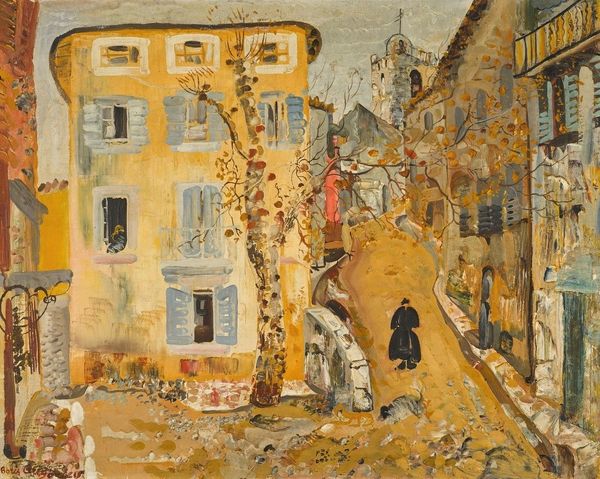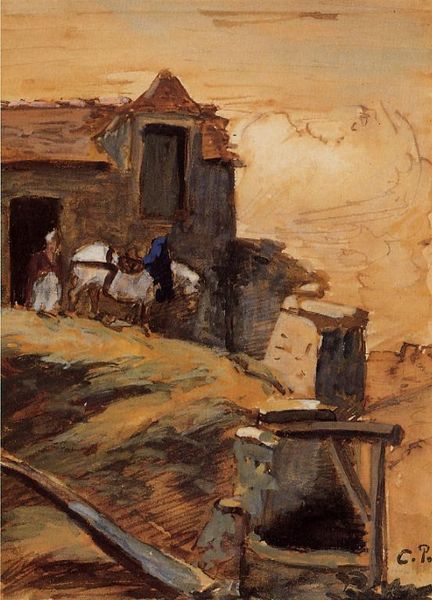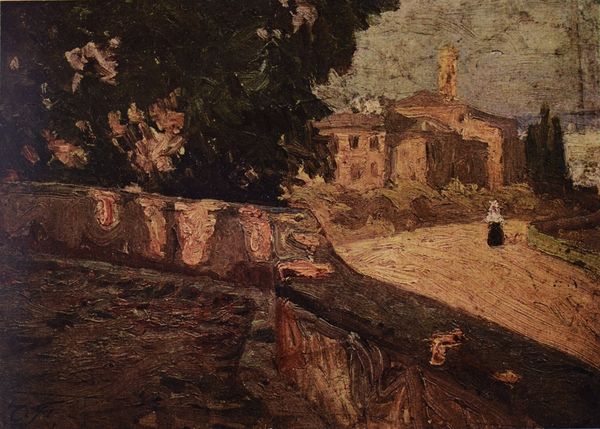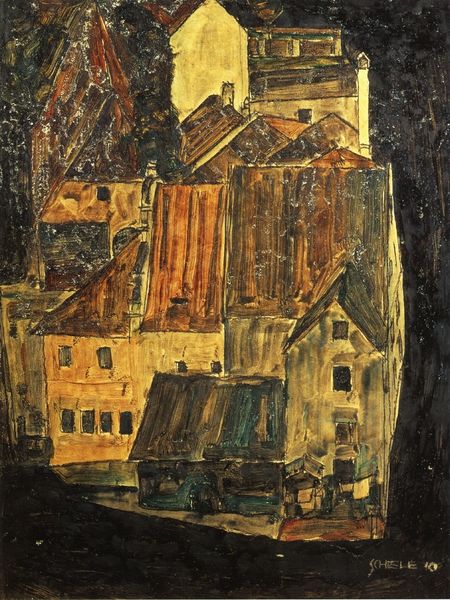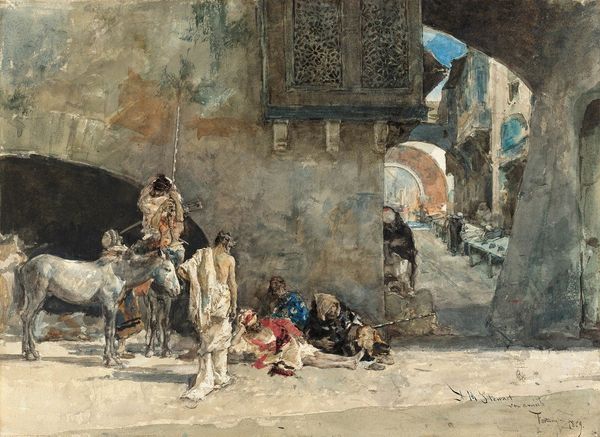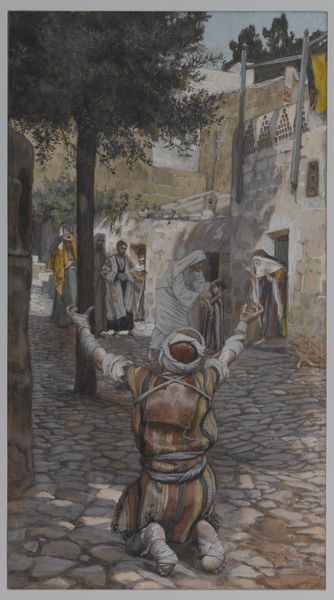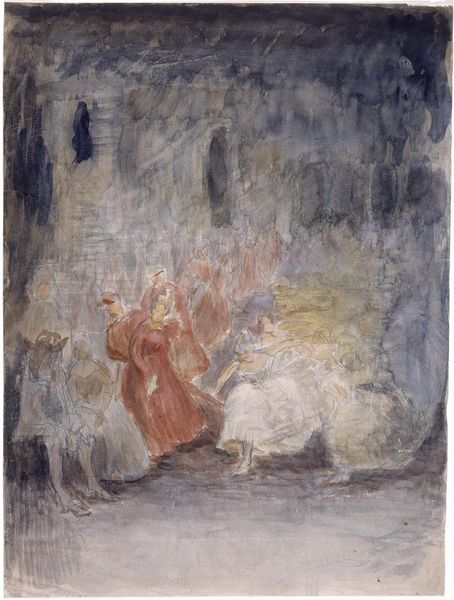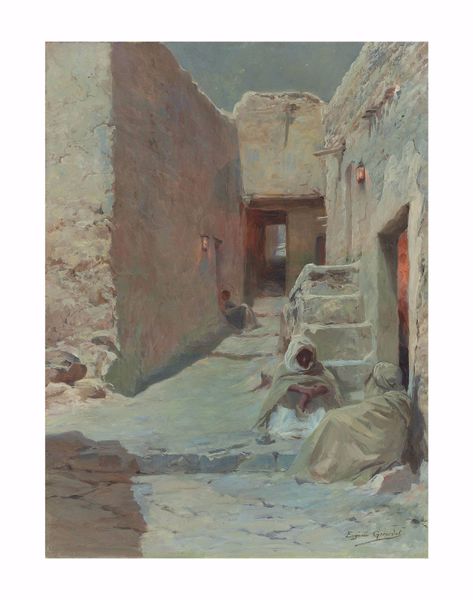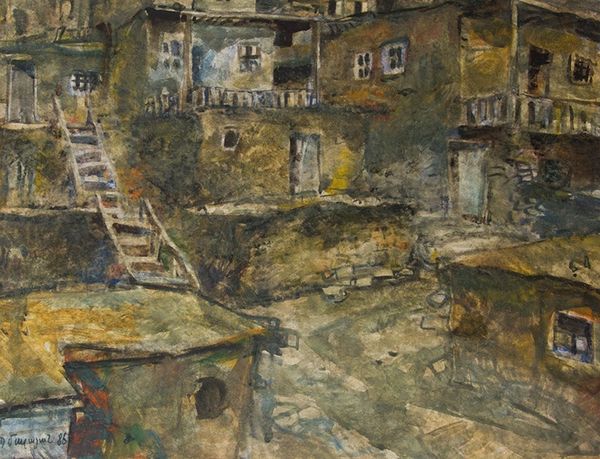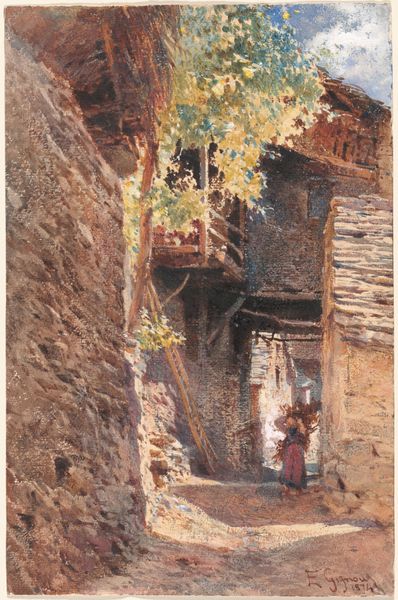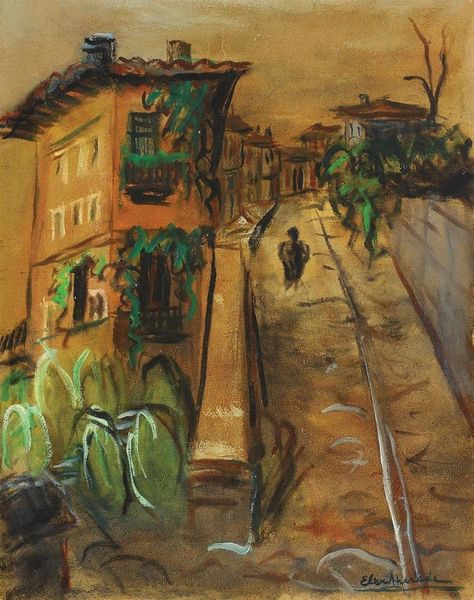
#
abstract painting
#
impressionist painting style
#
impressionist landscape
#
possibly oil pastel
#
oil painting
#
acrylic on canvas
#
underpainting
#
painterly
#
painting painterly
#
watercolor
Copyright: Alexis Gritchenko,Fair Use
Curator: Alexis Gritchenko painted this striking oil on canvas in 1934. It's entitled "Rue D'Albarracin, Aragon." Editor: It's immediately captivating. The sheer texture—those thick, almost frantic brushstrokes—makes it feel so immediate. There's an intense dance between light and shadow. The stark black mass is so visually jarring at first glance. Curator: Exactly. Look at the positioning of the figures in the composition. Their placement draws our eyes not just to them, but to their roles in this historical context. The labour suggested by the figure carrying an item over her head, the family dynamic implied by the woman and child, the solitary figures… they offer a peek into their lives in the 1930s. Editor: And speaking of symbols, I’m drawn to the contrast. The darkness casts long shadows, creating a somewhat claustrophobic alleyway, but on the upper corner there’s a flash of bright red and white that I want to associate with safety, almost religious imagery from the temples that often carry these colors. The composition creates the feeling that they all walk towards that destination. Curator: Interesting. I see what you mean in the contrast, how these elements serve as visual cues that suggest how social structures impact individual freedom. Considering this was painted in 1934, it subtly critiques existing power dynamics in Europe at the time, by placing it in Spain the context might be charged with some social criticism of traditional conservative views. Editor: Perhaps. For me, the symbolic weight is undeniable. The light seems to signify a future hope and divine direction as this road guides them forward as an invisible force. Even the black can be interpreted beyond the absence of light as the black plague’s weight on populations’ psyche. Curator: I agree about the hope that exists there. Through an intersectional lens, we see how class, gender, and location converge to shape human existence. Gritchenko gives visual form to these struggles. Editor: Definitely a thought provoking piece—layers upon layers of cultural resonance expressed through bold color and form. It will stick with me. Curator: Absolutely. It's a reminder of how deeply entangled art can be with the complexities of human experience.
Comments
No comments
Be the first to comment and join the conversation on the ultimate creative platform.
